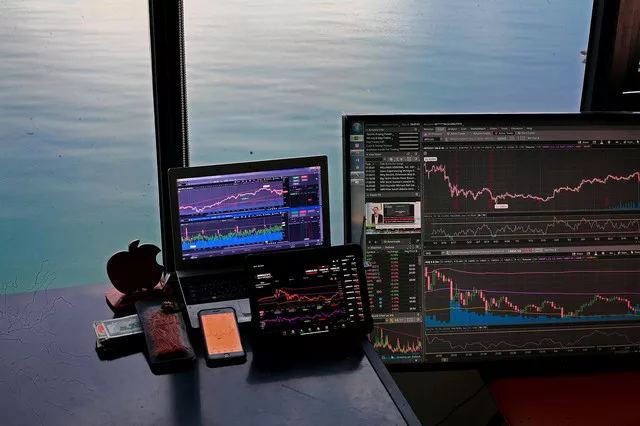Introduction:
Corn futures contracts are essential tools in the commodities market, allowing producers, traders, and investors to manage price risks associated with corn. Among the various corn futures contracts, December corn futures hold particular significance due to their timing and relevance to the agricultural cycle. In this article, we will delve into the intricacies of December corn futures, exploring their definition, market dynamics, factors influencing prices, and their importance in risk management strategies for participants in the agricultural commodities market.
Understanding December Corn Futures:
December corn futures are financial contracts that obligate the buyer to purchase, and the seller to deliver, a specified quantity of corn at an agreed-upon price on or before the expiration date in December. These futures contracts are traded on regulated exchanges such as the Chicago Board of Trade (CBOT), providing market participants with a standardized means of hedging against price fluctuations in the corn market.
Market Dynamics:
The pricing of December corn futures is influenced by a multitude of factors, including supply and demand dynamics, weather conditions, government policies, currency fluctuations, and global economic trends. Traders and analysts closely monitor crop reports, weather forecasts, geopolitical developments, and macroeconomic indicators to gauge the market sentiment and anticipate price movements.
Seasonal Trends and Agricultural Cycle:
December corn futures are particularly significant as they coincide with the harvest season in major corn-producing regions, primarily in the United States. The anticipation of harvest yields, weather conditions during the growing season, and storage capacity constraints can significantly impact the supply dynamics and price outlook for December corn futures.
Factors Influencing Prices:
Supply and Demand Dynamics: The balance between corn production and consumption plays a crucial role in determining prices. Factors such as acreage planted, crop yields, consumption patterns, and export demand influence the supply-demand equation for corn futures.
Weather Conditions: Weather events such as droughts, floods, and adverse growing conditions can disrupt corn production, leading to supply shortages or surpluses, thereby impacting prices.
Government Policies: Government subsidies, trade policies, biofuel mandates, and regulations related to genetically modified organisms (GMOs) can affect corn prices by altering production incentives and market dynamics.
Currency Fluctuations: Corn prices are also influenced by currency movements, as corn is traded globally, and fluctuations in exchange rates can impact export competitiveness and demand.
Global Economic Trends: Economic indicators such as GDP growth, inflation rates, and consumer sentiment can influence overall commodity demand, including corn, thereby affecting prices.
Importance in Risk Management:
For participants in the agricultural commodities market, December corn futures serve as valuable risk management tools to mitigate price volatility and protect against adverse price movements. Farmers, grain merchants, processors, livestock producers, and investors utilize futures contracts to hedge their exposure to corn prices, thereby ensuring more predictable revenue streams and reducing financial risk.
Hedging Strategies:
Speculation: Traders and investors engage in speculative trading of December corn futures to profit from anticipated price movements based on their analysis of fundamental and technical factors.
Price Hedging: Farmers and producers can use December corn futures to lock in prices for their upcoming corn harvest, thereby safeguarding against potential price declines and ensuring a predetermined revenue stream.
Basis Trading: Market participants may also engage in basis trading, which involves exploiting price differentials between the futures market and the physical cash market to capture arbitrage opportunities.
Risks and Challenges:
While December corn futures offer benefits in terms of price risk management, they also entail certain risks and challenges that market participants must navigate. These include:
Basis Risk: Discrepancies between futures prices and cash market prices, known as basis risk, can impact the effectiveness of hedging strategies.
Margin Requirements: Futures trading involves margin requirements, which require participants to maintain sufficient capital to cover potential losses, adding to the cost of hedging.
Liquidity Risk: Illiquid markets can pose challenges for traders seeking to enter or exit positions in December corn futures, potentially leading to wider bid-ask spreads and increased transaction costs.
Market Volatility: Corn futures markets can experience significant volatility, driven by factors such as weather events, geopolitical tensions, and macroeconomic trends, making risk management more challenging.
Conclusion:
In conclusion, December corn futures play a vital role in the global agricultural commodities market, providing market participants with essential tools for price discovery, risk management, and investment opportunities. Understanding the dynamics of December corn futures, including market fundamentals, seasonal trends, and risk factors, is crucial for farmers, traders, processors, and investors seeking to navigate the complexities of the corn market and effectively manage price risks. By leveraging December corn futures contracts intelligently, market participants can mitigate exposure to price volatility and enhance the resilience of their operations in the ever-evolving landscape of agricultural commodities trading.


